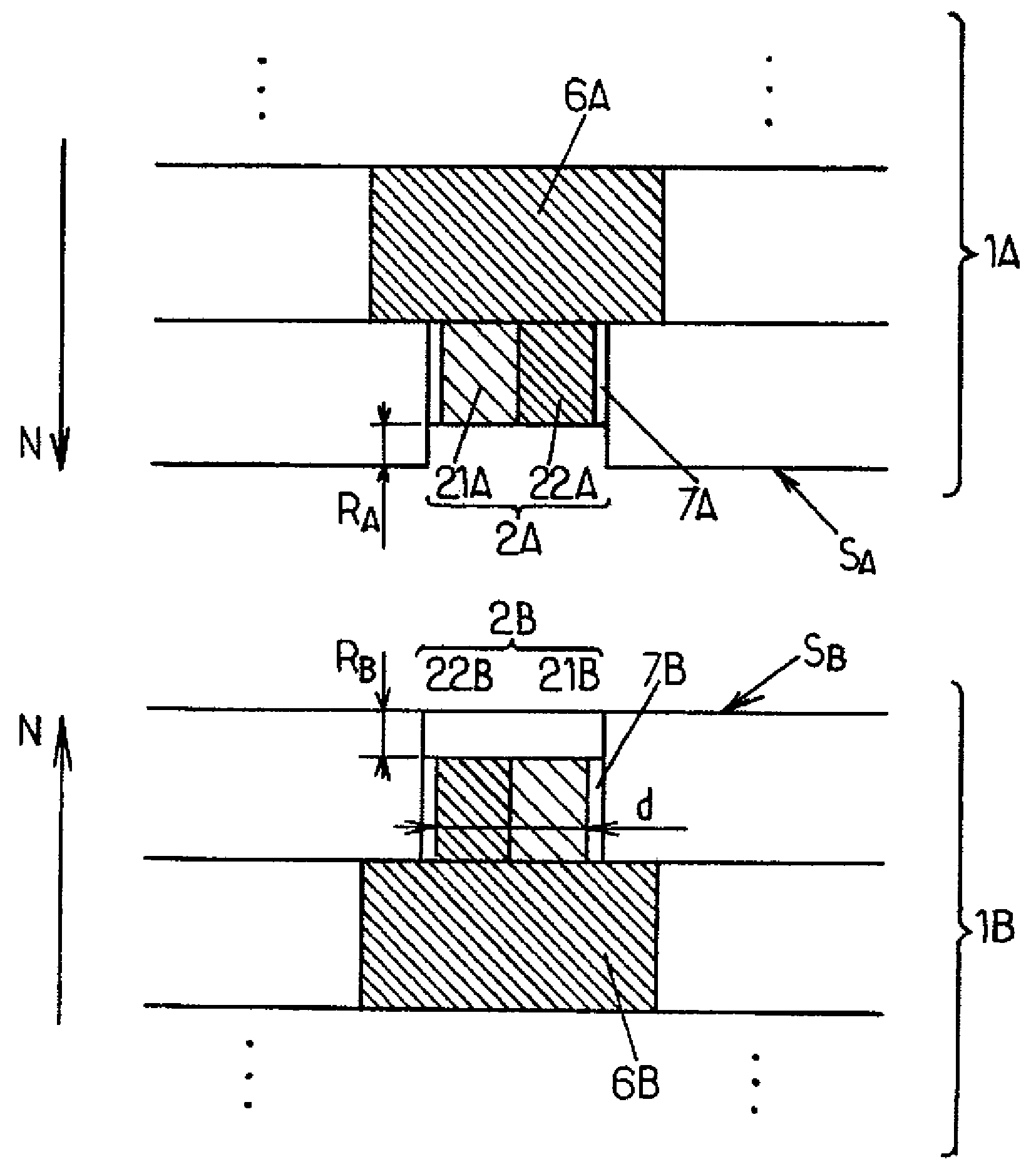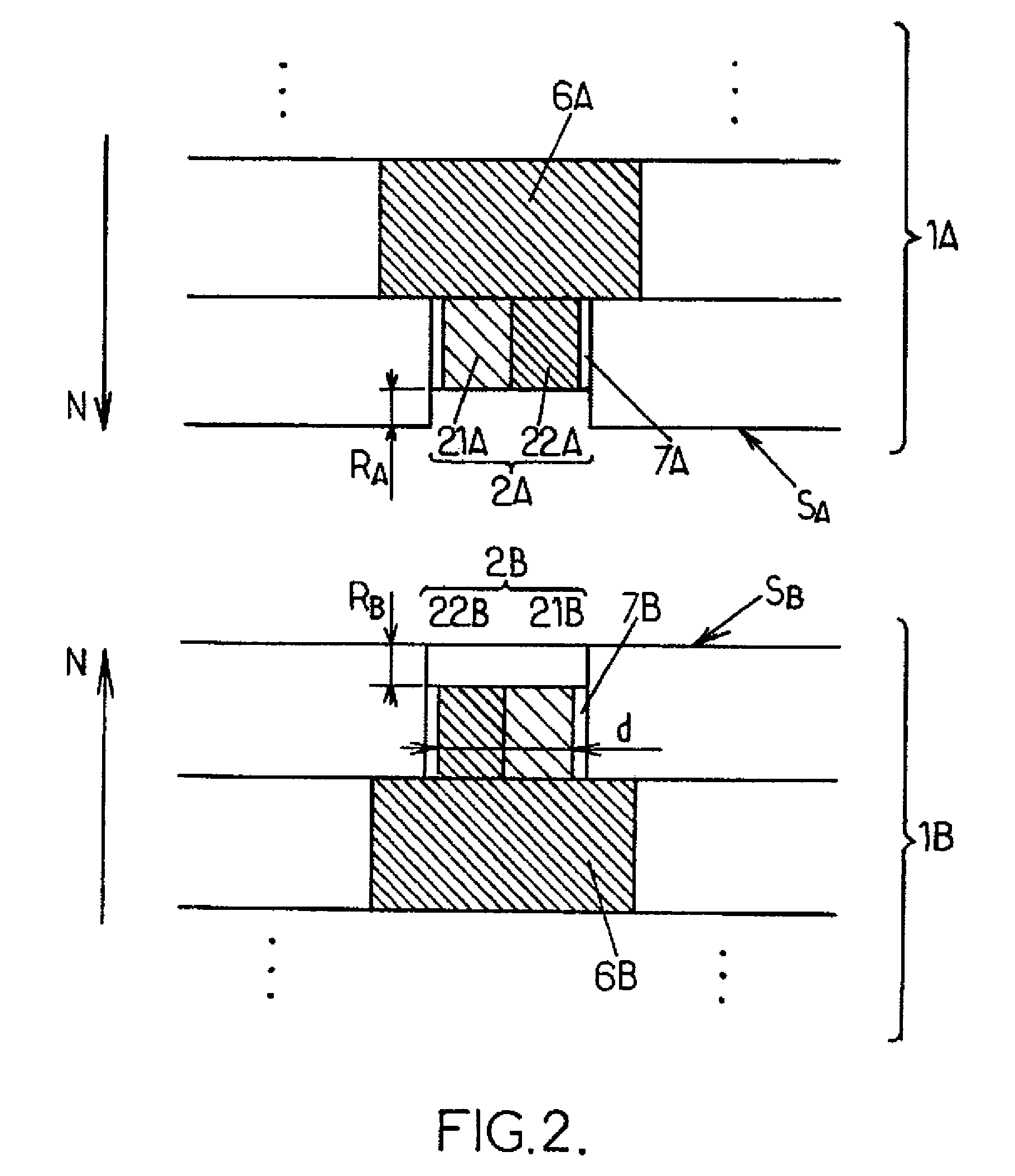Assembly of two parts of an integrated electronic circuit
a technology of integrated electronic circuit and assembly process, which is applied in the direction of electrically conductive connections, electrical apparatus construction details, and solvent media, etc., can solve the problems of long and difficult wire bonding, limited number of wire bonding connections, and limited number of electrical connections which can be implemented in this manner, so as to achieve more reliability in connection and reduce the robustness of the process of establishing a reliable electrical connection
- Summary
- Abstract
- Description
- Claims
- Application Information
AI Technical Summary
Benefits of technology
Problems solved by technology
Method used
Image
Examples
first embodiment
[0052]In a first embodiment, one of the two portions 2A, 2B of a same pair initially contains a quantity of silicon (Si), and the other portion of this pair initially contains at least one of the following metals: copper (Cu), cobalt (Co), nickel (Ni), titanium (Ti), tungsten (W), iridium (Ir), and platinum (Pt). The conductive alloy of the connection 2 is then a silicide of this metal, such as CoSi2 or NiSi for example.
second embodiment
[0053]In a second embodiment, one of the two portions 2A, 2B of a same pair initially contains a quantity of copper (Cu), and the other portion of this pair initially contains a quantity of tin (Sn). The conductive alloy of the connection 2 is then an alloy of copper and tin, able to form a solder between the portions 2A and 2B. In particular, this alloy may have a stoichiometry close to that of Cu3Sn.
[0054]The circuit is heated a second time in order to realize all the connections 2 simultaneously, forming the same number of conductive alloy portions. The temperature of this second heating can, for example, exceed 700° C., depending on the materials of the connection portions 2A and 2B. This second heating may also reinforce the molecular bonding which was done during the first heating.
[0055]When the connection portions 2A, 2B have recesses RA, RB, the second heating may be adapted to cause at least one of the materials in the portions 2A, 2B of a same pair to diffuse across the re...
PUM
| Property | Measurement | Unit |
|---|---|---|
| bonding temperature | aaaaa | aaaaa |
| bonding temperature | aaaaa | aaaaa |
| temperature | aaaaa | aaaaa |
Abstract
Description
Claims
Application Information
 Login to View More
Login to View More - R&D
- Intellectual Property
- Life Sciences
- Materials
- Tech Scout
- Unparalleled Data Quality
- Higher Quality Content
- 60% Fewer Hallucinations
Browse by: Latest US Patents, China's latest patents, Technical Efficacy Thesaurus, Application Domain, Technology Topic, Popular Technical Reports.
© 2025 PatSnap. All rights reserved.Legal|Privacy policy|Modern Slavery Act Transparency Statement|Sitemap|About US| Contact US: help@patsnap.com



